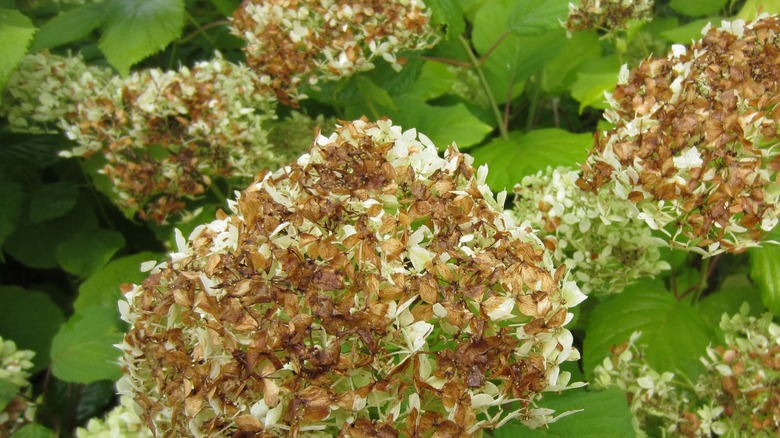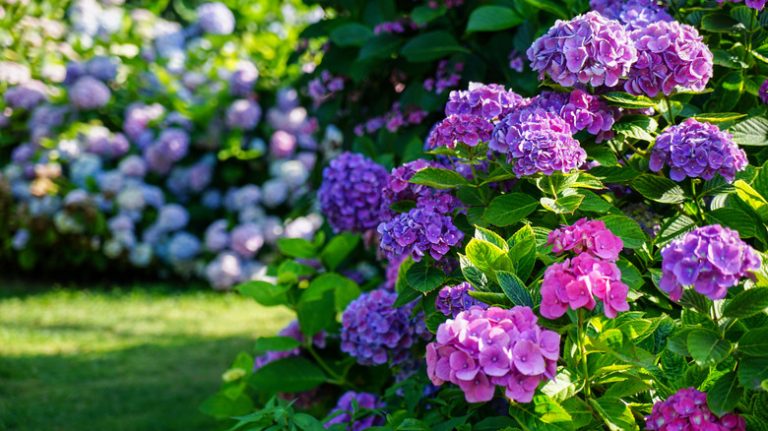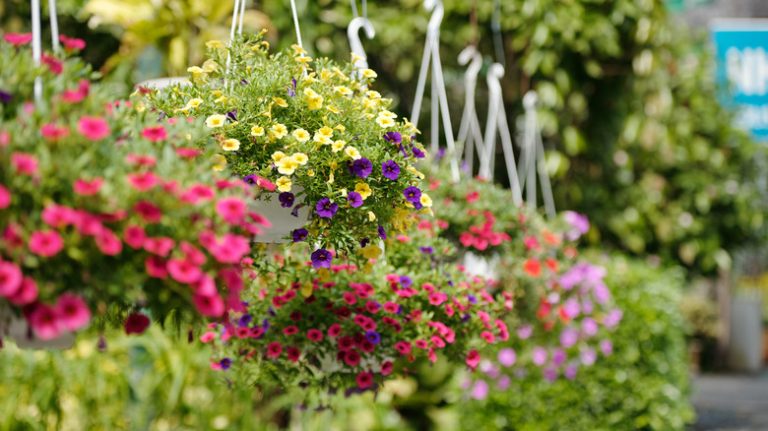Caring for hydrangeas can be challenging, depending on the growing conditions you’re dealing with. It can be heartbreaking when the flowers turn brown prematurely. One common cause is an issue with the watering schedule. Adding mulch can help retain moisture and prevent this problem. The summer heat can also disrupt the watering routine. There are other reasons why this could be happening, but there are steps you can take to fix it.
The leaves of the hydrangea can also turn brown, either around the edges or with spots on them. Brown edges often indicate too much fertilizer, which can damage the root system. It’s best to use the minimum amount of fertilizer to avoid this. Brown spots on the leaves are likely a fungal disease. In this case, remove the affected leaves and any loose ones from your garden. Using an antifungal treatment can also help. But what about the blooms themselves?
Why hydrangea flowers may be turning brown
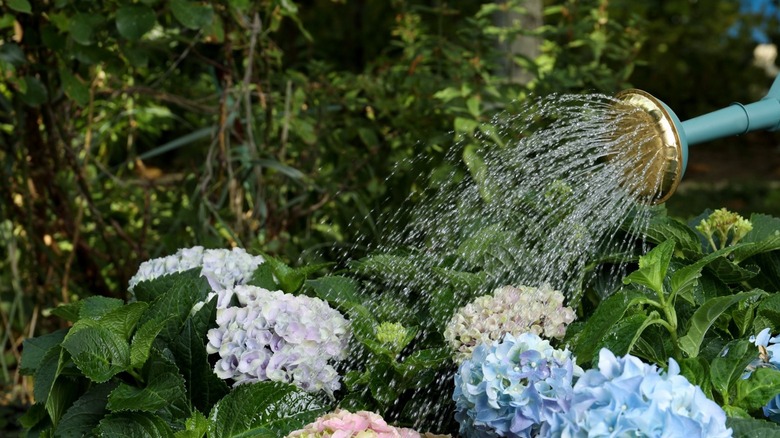
When hydrangeas become stressed or damaged, their blooms may wilt or turn brown prematurely. Insufficient water is one of the most common reasons for fading and browning of the flowers. High temperatures and excessive heat advisories can also cause wilting and stress, leading to browning. Moreover, lots of sunlight can contribute to the browning of blooms.
Another reason for brown hydrangea blooms could be too much fertilizer, which can burn the edges of the leaves and affect the flowers. It is important to carefully follow the instructions when fertilizing. Additionally, an excess of aluminum sulfate in the soil may contribute to browning. Regular soil testing is important to ensure the necessary nutrients are present. If hydrangeas are in pots, the pots may be too small, causing moisture to be depleted more quickly due to winds. These are the main reasons why hydrangea blooms may turn brown.
How to fix the problem
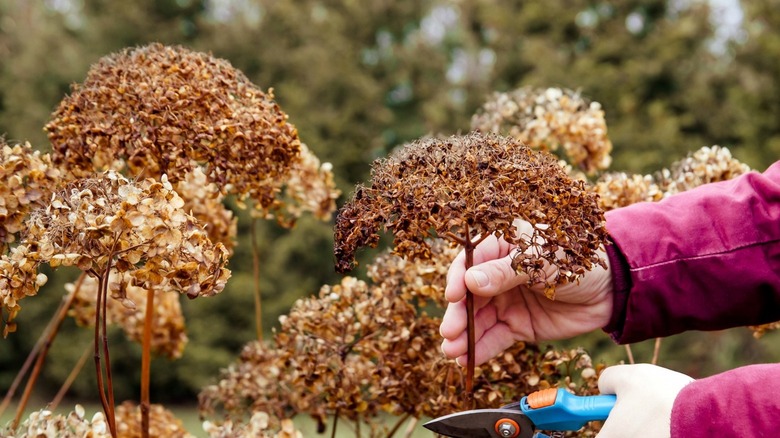
To ensure the health of your hydrangeas, it is important to keep the roots consistently moist, as the main reason for issues is often insufficient water. If your soil is rocky or sandy, it may drain too quickly, preventing the roots from staying moist. In high temperatures, daily watering may be necessary, depending on your specific conditions. While there is no fixed schedule to follow, it is crucial to be vigilant.
Begin by removing any blooms that turn brown directly beneath the flower. Clip off brown leaves as well, ensuring their proper disposal. Provide the plant with a thorough watering and check on it daily. It is also important to provide your hydrangeas with some shade in the afternoon. Partial shade and partial sun are ideal, and make sure they are protected from strong winds. Instead of transplanting, consider planting other vegetation that can offer shade and protection for your hydrangeas. Applying a layer of mulch, at least two inches thick, can help the soil retain the necessary moisture.
Lastly, have your soil tested to determine its pH level. Soil that is too acidic or too alkaline can cause the flowers to turn brown. By following these steps, you can cultivate beautiful, colorful hydrangeas.

